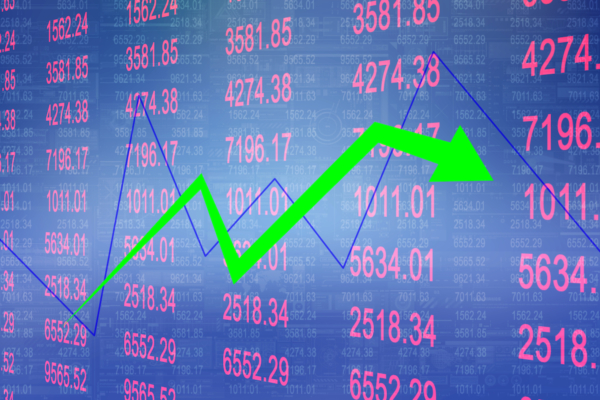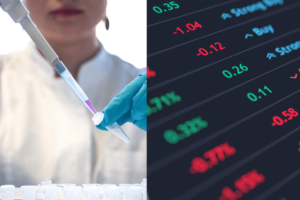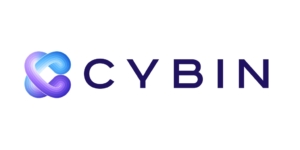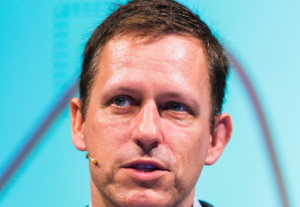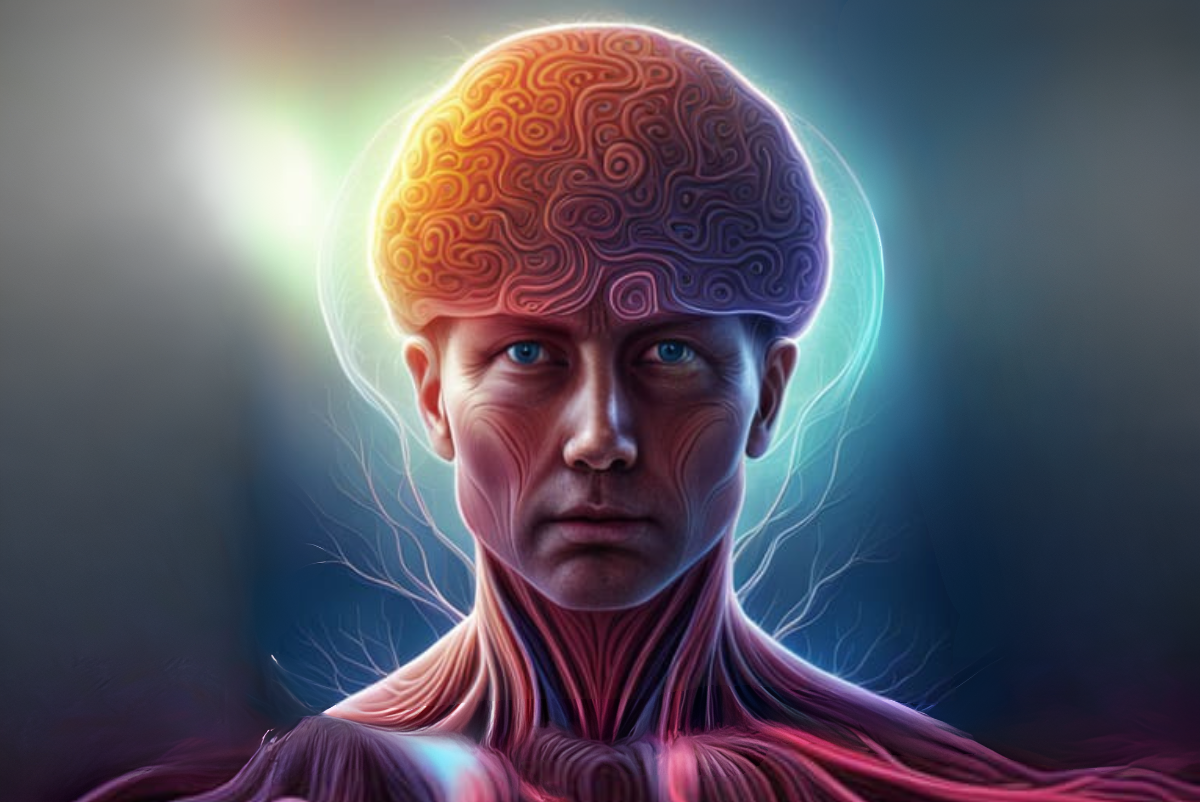
Abstract
Psychedelic therapies, involving plant-based substances like psilocybin, ibogaine, and ayahuasca, have gained considerable attention for their potential to facilitate transformative experiences and promote mental well-being. Specifically, these therapies are being explored for the treatment of various mental health conditions such as post-traumatic stress disorder, depression, and substance abuse. However, recent studies suggest that neuroinflammation, an immune response in the brain, has counter-productive effects on the efficacy of these psychedelic treatments. Important to the ability of these substances to affect a change in neuronal functioning, that leads ultimately to improved mental health, is their ability to be recognized by specific cell receptors. In the presence of trauma induced neuroinflammation, there is a change in the composition of the brain’s biochemistry from one that is neuropermissive to one that is neurorestrictive. Neurons and glia exposed to a neuropermissive environment function optimally producing neurotransmitters, enzymes, neuroreceptors, neurosteroids, and an assortment of neurochemicals to support a healthy brain. Contrary to this is a neurorestrictive environment which activates glial cells leading to the release of pro-inflammatory cytokines that foster an increase in oxidative stress leading to more inflammation, mitochondrial dysfunction, apoptosis, and loss of neurotransmitters and their receptors. This article will highlight the damaging influence neuroinflammation has on the production of neurotransmitters and the functionality of neuroreceptors, thereby affecting the efficacy of psychedelic-assisted therapies.
Introduction
Psychedelic medications, such as LSD, MDMA (Ecstasy), psilocybin (“Magic Mushrooms”), ibogaine, ayahuasca, and DMT, are thought to exert their effects by binding to and activating specific receptors in the brain, primarily the 5-HTA2 serotonin receptors. 1Ziff, S., Stern, B., Lewis, G., Majeed, M., & Gorantla, V. R. (2022). Analysis of Psilocybin-Assisted Therapy in Medicine: A Narrative Review. Cureus, 14(2), e21944. https://doi.org/10.7759/cureus.219442Hesselink, M. B. (2019). Psychedelics as medicines for substance abuse rehabilitation: Evaluating treatments with LSD, Peyote, Ibogaine and Ayahuasca. Current Drug Abuse Reviews, 12(2), 93-101. doi: 10.2174/1874473712666190121112804 These receptors are located in several regions of the brain, including the prefrontal cortex, which is involved in decision-making and social behavior, and the visual cortex, which processes visual information. 3Zhang, G., & Stackman, R. W. (2015). The role of serotonin 5-HT2A receptors in memory and cognition. Frontiers in Pharmacology, 6(OCT), 1–17. https://doi.org/10.3389/fphar.2015.00225 4Jakab, R. L., & Goldman-Rakic, P. S. (1998). 5-Hydroxytryptamine2A serotonin receptors in the primate cerebral cortex: Possible site of action of hallucinogenic and antipsychotic drugs in pyramidal cell apical dendrites. Proceedings of the National Academy of Sciences of the United States of America, 95(2), 735–740. https://doi.org/10.1073/pnas.95.2.735
When a psychedelic agent binds to a 5-HTA2 receptor, it activates a signaling cascade within the neuron. This cascade involves the activation of several intracellular signaling pathways, including the phospholipase C (PLC) pathway and the cyclic AMP (cAMP) pathway. 5Anderson, B. T., & Maier, S. F. (2021). Neuroinflammation and the dynamic interaction of psychedelic drugs with the immune system. Neuropharmacology, 196, 108671. doi: 10.1016/j.neuropharm.2021.108671 6Lopez-Gimenez, J. F., et al. (2019). The hallucinogen 2,5-dimethoxy-4-iodoamphetamine hydrochloride activates sigma-1 receptor-mediated signaling pathways involved in neuroplasticity processes. Molecular Neurobiology, 56(3), 1909-1924. doi: 10.1007/s12035-018-1205-yThese pathways ultimately lead to changes in gene expression and protein synthesis within the neuron, which can alter its function.7Ly, C., Greb, A. C., & Cameron, L. P. (2018). Psychedelics promote structural and functional neural plasticity. Cell Reports, 23(11), 3170-3182. doi: 10.1016/j.celrep.2018.05.022
Furthermore, the precise neurochemical mechanisms by which psychedelic agents produce their effects are not fully understood, but it is thought that they may alter the balance between excitatory and inhibitory neurotransmitters. For example, they may decrease the activity of the inhibitory neurotransmitter GABA and increase the activity of the excitatory neurotransmitter glutamate, leading to an overall increase in neuronal activity.8Osório, F. L., et al. (2019). Clinical applications of hallucinogens: A review. International Journal of Molecular Sciences, 20(20), 4979. doi: 10.3390/ijms20204979The efficacy of this response to the applied psychedelic agent is directly related to the cellular density of the corresponding neurotransmitter’s receptor. For example, if neuroinflammation has reduced the number of GABA receptors as well as GABA, an excitatory response will ensue creating a hyper excitable state.
Additionally, some psychedelic agents, such as ayahuasca, contain compounds that can inhibit the activity of monoamine oxidase (MAO), an enzyme that breaks down neurotransmitters like serotonin and dopamine. This inhibition can lead to an increase in the concentration of these neurotransmitters which may contribute to the psychedelic experience.9Naseri, N., Haddad, P. M., & Moghaddam, M. (2021). Psychedelic-assisted therapies and the role of inflammation: A comprehensive review. Journal of Psychopharmacology, 35(2), 131-148. doi: 10.1177/0269881120985775 10Felger, J. C. (2018). Imaging the role of inflammation in mood and anxiety-related disorders. Current Neuropharmacology, 16(5), 533-558. doi: 10.2174/1570159X15666170915150923
It’s important to note that the effects of psychedelic medications on brain function are complex and can vary depending on the individual, the dose, and the composition of the brain’s neurochemistry. This paper is not about how to deliver any specific psychedelic agent, but how to optimize their beneficial effects through modification and control of adverse conditions such as neuroinflammation. Think of neuroinflammation as a wall that needs to be surmounted by the psychedelic agent. Lowering this barrier will allow for microdosing efficacy to be enhanced as well as improving the surrounding neurochemistry to support the biological changes induced by the psychedelic agent.11Capuron, L., et al. (2018). Role of inflammation in the development of neuropsychiatric symptom domains: Evidence and mechanisms. The Lancet Psychiatry, 5(3), 233-245. doi: 10.1016/S2215-0366(17)30287-412Kaczorowski, D. C., et al. (2017). Psychedelic agents in the treatment of mood disorders: A review. Journal of Affective Disorders, 208, 327-333. doi: 10.1016/j.jad.2016.10.04913Northoff, G. (2016). Psychedelics, neuroplasticity, and neurophilosophy of depression: The visual cortex model. Frontiers in Psychology, 7, 542. doi: 10.3389/fpsyg.2016.00542
Understanding Neuroimmunoinflammation
Neuroimmunoinflammation, a fascinating and intricate process, involves the activation of the immune system within the central nervous system (CNS). As a vital defense mechanism, neuroimmunoinflammation aims to safeguard the brain against infections and injuries, ensuring its proper functioning. However, emerging research suggests that chronic or excessive neuroinflammation can have detrimental effects on brain health and is implicated in a range of conditions, including neurodegenerative disorders, chronic stress, and psychiatric illnesses.14Ransohoff RM, Brown MA. Innate immunity in the central nervous system. J Clin Invest. 2012;122(4):1164-1171. doi:10.1172/JCI5864415Onaivi, E. S., Ishiguro, H., & Gu, S. (2020). Role of neuroinflammation in the pathophysiology of mental illness: A review. Psychopharmacology Bulletin, 50(1), 69-84.
The CNS, once considered an immunologically privileged site, is now recognized as a dynamic environment where immune responses interact with neural networks to influence various physiological processes. Neuroimmunoinflammation is mediated by a complex interplay between immune cells, glial cells, and neurons. Microglia, the resident immune cells in the brain, act as the first line of defense against pathogens and damaged tissue. Upon activation, microglia release pro-inflammatory cytokines, such as tumor necrosis factor-alpha (TNF-α), interlukin-6 (IL-6), and interleukin-1β (IL-1β), propagating an immune response in the CNS16Dantzer R, O’Connor JC, Freund GG, Johnson RW, Kelley KW. From inflammation to sickness and depression: when the immune system subjugates the brain. Nat Rev Neuroscience. 2008;9(1):46-56. doi:10.1038/nrn229717Koo, M. S., et al. (2020). Dynamic neuroinflammatory responses after repeated mild traumatic brain injury: Implications for stress-induced neuropathology. Molecular Neurobiology, 57(9), 3820-3836. doi: 10.1007/s12035-020-01962-7 as well as inflammation.
Under normal circumstances, neuroimmunoinflammation serves as an adaptive response, promoting tissue repair and restoration of CNS homeostasis. However, dysregulation of this delicate balance can lead to chronic neuroinflammatory conditions, with profound consequences on brain function and overall mental health.
In the context of neurodegenerative disorders, accumulating evidence suggests that chronic neuroinflammation contributes to disease progression. Conditions such as Alzheimer’s disease, Parkinson’s disease, and multiple sclerosis are characterized by the presence of activated immune cells and elevated levels of pro-inflammatory mediators. These inflammatory responses may exacerbate neuronal damage and contribute to neurodegenerative processes.18Heneka MT, Carson MJ, El Khoury J, et al. Neuroinflammation in Alzheimer’s disease. Lancet Neurol. 2015;14(4):388-405. doi:10.1016/S1474-4422(15)70016-5
Moreover, chronic stress has been implicated in triggering neuroimmunoinflammation19Milior, G., Lecours, C., Samson, L., Bisht, K., et al. (2016). Fractalkine receptor deficiency impairs microglial and neuronal responsiveness to chronic stress. Brain, Behavior, and Immunity, 55, 114–125. https://doi.org/10.1016/j.bbi.2015.07.024, affecting both the brain and the body. Stress activates the hypothalamic-pituitary-adrenal (HPA) axis and the sympathetic nervous system, leading to the release of stress hormones and pro-inflammatory molecules. Prolonged exposure to these inflammatory mediators can impact neuronal function, disrupt synaptic plasticity, and alter mood regulation, potentially contributing to the development of mood disorders, such as depression and anxiety.20Gao HM, Hong JS. Why neurodegenerative diseases are progressive: uncontrolled inflammation drives disease progression. Trends Immunol. 2008;29(8):357-365. doi:10.1016/j.it.2008.05.002
Additionally, evidence suggests that neuroinflammation plays a role in all psychiatric illnesses. In conditions like schizophrenia and bipolar disorder, increased inflammatory markers have been observed in both the CNS and the periphery.21Khandaker GM, Dantzer R. Is there a role for immune-to-brain communication in schizophrenia?. Psychopharmacology (Berl). 2016;233(9):1559-1573. doi:10.1007/s00213-016-4213-x The bidirectional communication between the immune system and the brain, known as the “immunopsychiatry” paradigm, highlights the relevance of neuroimmunoinflammation in shaping cognitive and emotional functions.22 Moriarity, D. P., & Slavich, G. M. (2023). The future is dynamic: A call for intensive longitudinal data in immunopsychiatry. Brain, Behavior, and Immunity, 112(June), 118–124. https://doi.org/10.1016/j.bbi.2023.06.002.
While researchers have made significant strides in understanding neuroimmunoinflammation, many questions remain unanswered. Further investigations are needed to unravel the intricate mechanisms governing immune responses within the CNS and their consequences on brain health. Targeting neuroimmunoinflammation represents a promising avenue for the development of novel therapeutic approaches to mitigate the impact of chronic inflammation on brain function and improve overall neurological outcomes.23Capuron L, Miller AH. Immune system to brain signaling: Neuropsychopharmacological implications. Pharmacol Ther. 2011;130(2):226-238. doi: 10.1016/j.pharmthera.2011.01.014
Psychedelic-Assisted Therapies and Neuroinflammation
Psychedelic therapies have garnered increasing interest as potential novel treatments for various mental health conditions, with promising results reported in clinical trials. These therapies involve the controlled administration of psychedelic substances like psilocybin and LSD, guided by therapeutic support to induce altered states of consciousness.24Sampedro, F., et al. (2021). Assessing the effects of psilocybin on mental health, addictive behaviors, cognition, creativity, and social functioning in healthy volunteers: A systematic review of overlapping and unique effects. Therapeutic Advances in Psychopharmacology, 11, 20451253211024318. doi: 10.1177/20451253211024318 The profound and transformative experiences that can occur during psychedelic therapy have been associated with improvements in mood, emotional processing, and enhanced introspection.25Stone, J. M., Dietrich, C., Edden, R., Mehta, M. A., & De Simoni, S. (2020). Neuroinflammation in response to treatment with psychedelics: A systematic review. Journal of Psychopharmacology, 34(7), 747-764. doi: 10.1177/0269881120930950 However, the success of psychedelic therapies may be influenced by neuroinflammation, a complex phenomenon involving chronic inflammation in the CNS.26Capuron L, Miller AH. Immune system to brain signaling: Neuropsychopharmacological implications. Pharmacol Ther. 2011;130(2):226-238. doi: 10.1016/j.pharmthera.2011.01.014
Recent research suggests that neuroinflammation may interfere with the positive outcomes of psychedelic therapies. Neuroinflammation-induced alterations in the functioning of neurotransmitter systems implicated in the effects of psychedelics, such as serotonin, dopamine, and glutamate, could potentially diminish the therapeutic effects of these therapies.27Anderson, B. T., & Maier, S. F. (2021). Neuroinflammation and the dynamic interaction of psychedelic drugs with the immune system. Neuropharmacology, 196, 108671. doi: 10.1016/j.neuropharm.2021.108671
Serotonin, a neurotransmitter known for its role in mood regulation and emotional processing, plays a pivotal role in the effects of psychedelics. Psychedelics like psilocybin and LSD primarily interact with serotonin 2A receptors (5-HT2A), leading to altered perception and cognition. Neuroinflammation can alter serotonin receptor expression and function, potentially reducing the responsiveness to psychedelics and impeding their therapeutic effects.28Jakab, R. L., & Goldman-Rakic, P. S. (1998). 5-Hydroxytryptamine2A serotonin receptors in the primate cerebral cortex: Possible site of action of hallucinogenic and antipsychotic drugs in pyramidal cell apical dendrites. Proceedings of the National Academy of Sciences of the United States of America, 95(2), 735–740. https://doi.org/10.1073/pnas.95.2.735
Moreover, dopamine and glutamate, which are also involved in psychedelic-induced states, can be affected by chronic inflammation. Imbalances in dopamine levels have been linked to mood disorders, and neuroinflammation may contribute to dysregulation of dopamine pathways. Similarly, glutamate dysregulation has been implicated in psychiatric disorders, and neuroinflammation can disrupt glutamate neurotransmission, potentially affecting the response to psychedelic therapies.29Guerriero, R. M., Gize, C. C., Rotenberg, A., Geurriero, R. M., Giza, C. C., & Rotenberg, A. (2015). Glutamate and GABA imbalance following traumatic brain injury. Curr Neurol Neuroscience Rep, 15(5), 1–20. https://doi.org/10.1007/s11910-015-0545-1.Glutamate
Furthermore, neuroinflammation impacts the plasticity of neuronal networks, which is essential for the therapeutic effects of psychedelics. Psychedelics have been suggested to enhance neuroplasticity, allowing for new connections and insights during therapy. However, chronic inflammation can impair neuroplasticity, hindering the brain’s ability to adapt and reorganize in response to therapeutic interventions.30Xiong, Y., Mahmood, A., & Chopp, M. (2018). Current understanding of neuroinflammation after traumatic brain injury and cell-based therapeutic opportunities. Chinese Journal of Traumatology – English Edition, 21(3), 137–151. https://doi.org/10.1016/j.cjtee.2018.02.003
The relationship between neuroinflammation and the outcomes of psychedelic therapies is complex and multifaceted. The presence of neuroinflammation in an individual may result from various factors, including genetic predisposition, environmental influences, and lifestyle choices. As a result, the response to psychedelic therapy may be influenced by individual variability, highlighting the importance of personalized approaches in treatment.
Addressing neuroinflammation as part of the therapeutic process may be a promising approach to optimize the outcomes of psychedelic-assisted therapies. Combining psychedelics with adjunct treatments that target inflammation and promotes a healthy lifestyle (exercising, good hydration, a balanced nutrition, relaxation, and no alcohol) that mitigates chronic inflammation, can enhance the efficacy of these therapies. Moreover, further research is needed to elucidate the precise mechanisms by which neuroinflammation affects the responses to psychedelic agents and to develop tailored approaches to maximize their therapeutic potential.31Capuron L, Miller AH. Immune system to brain signaling: Neuropsychopharmacological implications. Pharmacol Ther. 2011;130(2):226-238. doi: 10.1016/j.pharmthera.2011.01.014
Psilocybin and Neuroinflammation
Psilocybin, the active compound found in “magic mushrooms,” has emerged as a promising candidate for treating conditions such as depression and anxiety. Its unique ability to induce altered states of consciousness and facilitate transformative experiences has attracted significant interest in the field of mental health therapeutics. However, recent research suggests that the presence of neuroinflammation may compromise the desired therapeutic effects of psilocybin.32Nkadimeng, S. M., Steinmann, C. M. L., & Eloff, J. N. (2021). Anti-inflammatory effects of four psilocybin-containing magic mushroom water extracts in vitro on 15-lipoxygenase activity and on lipopolysaccharide-induced cyclooxygenase-2 and inflammatory cytokines in human U937 macrophage cells. Journal of Inflammation Research, 14(June), 3729–3738. https://doi.org/10.2147/JIR.S317182
Neuroinflammation, characterized by chronic inflammation in the central nervous system (CNS), can disrupt the intricate neuronal signaling influenced by psilocybin. Inflammatory processes may interfere with the precise mechanisms of action by which psilocybin interacts with serotonin 2A receptors (5-HT2A), leading to altered perception and cognition. These disruptions may hamper psilocybin’s ability to promote neuroplasticity, a process crucial for the therapeutic effects of psychedelics, such as enhanced emotional processing and introspection.33Zhang, G., & Stackman, R. W. (2015). The role of serotonin 5-HT2A receptors in memory and cognition. Frontiers in Pharmacology, 6(OCT), 1–17. https://doi.org/10.3389/fphar.2015.00225
The presence of neuroinflammation may alter the responsiveness of serotonin receptors and neurotransmitter systems involved in mood regulation and emotional processing. Dysregulation of these systems could limit the capacity of psilocybin to induce transformative experiences and may mitigate its therapeutic potential in individuals with chronic CNS inflammation.34Haroon E, Raison CL, Miller AH. Psychoneuroimmunology meets neuropsychopharmacology: translational implications of the impact of inflammation on behavior. Neuropsychopharmacology. 2012;37(1):137-162. doi:10.1038/npp.2011.205
MDMA and Neuroinflammation
Methylenedioxymethamphetamine (MDMA), commonly known as ecstasy, has garnered significant attention in recent years for its potential therapeutic use in treating post-traumatic stress disorder (PTSD). Preliminary studies have shown promising results, suggesting that MDMA-assisted therapy could facilitate breakthroughs in emotional processing and enhance the formation of positive therapeutic bonds. However, the presence of neuroinflammation in individuals with PTSD raises intriguing questions about the potential impact on treatment outcomes.35Krediet, E., Bostoen, T., Breeksema, J., van Schagen, A., Passie, T., & Vermetten, E. (2020). Reviewing the Potential of Psychedelics for the Treatment of PTSD. The International Journal of Neuropsychopharmacology, 23(6), 385–400. https://doi.org/10.1093/ijnp/pyaa018
Neuroinflammation has been implicated in the pathophysiology of PTSD. Traumatic experiences can trigger an immune response in the central nervous system, leading to the release of pro-inflammatory mediators such as cytokines and chemokines. These inflammatory processes may contribute to the persistence of PTSD symptoms and hinder the brain’s capacity to adapt and process emotional traumas effectively.36Katrinli, S. (2022). The role of the immune system in posttraumatic stress disorder. Translational Psychiatry (2022), 12. https://doi.org/10.1017/S1092852900016862
The presence of pre-existing inflammation may negatively impact the response to MDMA-assisted therapy. Pro-inflammatory mediators could potentially interfere with the precise mechanisms of action by which MDMA influences neurotransmitter systems, particularly serotonin and oxytocin. MDMA enhances serotonin release and inhibits its reuptake, leading to increased synaptic levels of this neurotransmitter. Serotonin plays a crucial role in mood regulation, emotional processing, and social behavior, making it a key player in the therapeutic effects of MDMA.37Boris D. Heifets1, 2, Juliana S. Salgado1, 2, Madison D. Taylor2, Paul Hoerbelt2, Daniel F. Cardozo Pinto2, Elizabeth E. Steinberg2, Jessica J. Walsh2, Ji Y. Sze3, R. C. M. (2019). Distinct neural mechanisms for the prosocial and rewarding properties of MDMA. Sci Transl Med., 11(522), 1–25. https://doi.org/10.1126/scitranslmed.aaw6435.Distinct
Moreover, MDMA also promotes the release of oxytocin, often referred to as the “love hormone” due to its role in bonding and social interactions. Oxytocin is implicated in the formation of positive therapeutic bonds between patients and therapists, creating a supportive and empathetic environment that facilitates emotional processing during MDMA-assisted sessions.38Szafoni, S., Więckiewicz, G., Pudlo, R., Gorczyca, P., & Piegza, M. (2022). Will MDMA-assisted psychotherapy become a breakthrough in treatment- resistant post-traumatic stress disorder? Psychiatria Polska, 56(4), 823–836. https://doi.org/10.12740/PP/OnlineFirst/133919
In the context of neuroinflammation, the dysregulation of these neurotransmitter systems could potentially limit the efficacy of MDMA-assisted therapy. Inflammatory processes may disrupt serotonin receptor function and interfere with the empathetic and prosocial effects of oxytocin, potentially dampening the desired therapeutic outcomes. Additionally, it has been found that pro-inflammatory cytokines can induce neurotoxicity when MDMA is used.39Sumracki NM, Jensen S, Madsen MT, Sørensen AT, Nordentoft M, Stenbæk DS. Proinflammatory cytokines are involved in MDMA-induced neurotoxicity in rat brain. Toxicol Sci. 2022;181(1):106-115. doi:10.1093/toxsci/kfab105
Understanding the complex interplay between MDMA and neuroinflammation is crucial for optimizing treatment efficacy and patient outcomes. Further research is needed to elucidate the precise mechanisms by which neuroinflammation affects the interactions between MDMA and the CNS. Identifying potential adjunct therapies that target neuroinflammation or exploring personalized treatment approaches based on an individual’s inflammatory state could enhance the effectiveness of MDMA-assisted therapy in treating PTSD.40Capuron, L., et al. (2018). Role of inflammation in the development of neuropsychiatric symptom domains: Evidence and mechanisms. The Lancet Psychiatry, 5(3), 233-245. doi: 10.1016/S2215-0366(17)30287-4
As the field of psychedelic-assisted therapies continues to evolve, addressing the impact of neuroinflammation on MDMA’s therapeutic effects may lead to advancements in mental health treatments and offer hope to individuals suffering from PTSD with a greater degree of efficacy.
Ibogaine, Ayahuasca and Neuroinflammation
Ibogaine, a psychoactive compound derived from the iboga plant, and ayahuasca, a brew made from the Amazonian vine Banisteriopsis caapi, have garnered increasing attention for their potential in treating addiction disorders.41Brown TK. Ibogaine in the treatment of substance dependence. Curr Drug Abuse Rev. 2013;6(1):3-16. doi:10.2174/1874473706666131121160413 Both substances have been associated with transformative and introspective experiences, which could hold therapeutic value for individuals struggling with addiction. However, the presence of neuroinflammation associated with chronic drug use raises important considerations about the potential impact on the efficacy of ibogaine and ayahuasca-assisted therapies.42Hesselink, M. B. (2019). Psychedelics as medicines for substance abuse rehabilitation: Evaluating treatments with LSD, Peyote, Ibogaine and Ayahuasca. Current Drug Abuse Reviews, 12(2), 93-101. doi: 10.2174/1874473712666190121112804
Chronic drug use is known to trigger an immune response in the central nervous system, leading to neuroinflammation.43Perioperative, T. (2018). Signal Crosstalk Between TLR4 and Opioid Receptor Pathways Toll-like NF- κ B. Translational Perioperative and Pain Medicine, 5(1). https://www.ncbi.nlm.nih.gov/pmc/articles/PMC7360813/ Inflammatory processes may disrupt the neural circuitry involved in addiction, including reward pathways and motivational centers. The alterations caused by neuroinflammation may contribute to the persistence of addictive behaviors and impede the brain’s ability to adapt to therapeutic interventions effectively.44Bogenschutz MP, Johnson MW. Classic hallucinogens in the treatment of addictions. Prog Neuropsychopharmacology Biol Psychiatry. 2016; 64:250-258. doi: 10.1016/j.pnpbp.2015.03.002
The presence of pre-existing neuroinflammation may pose challenges for the effectiveness of ibogaine and ayahuasca-assisted therapies in addiction treatment. Inflammatory processes might interfere with the precise mechanisms of action by which these substances exert their effects on the brain. Ibogaine has been suggested to interact with various neurotransmitter systems, including serotonin and glutamate, which are involved in addiction and mood regulation.45Uthaug MV, Lancelotta R, van Oorsouw K, et al. A single inhalation of vapor from dried toad secretion containing 5-methoxy-N, N-dimethyltryptamine (5-MeO-DMT) in a naturalistic setting is related to sustained enhancement of satisfaction with life, mindfulness-related capacities, and a decrement of psychopathological symptoms. Psychopharmacology (Berl). 2021;238(6):1641-1654. doi:10.1007/s00213-021-05789-4 Similarly, ayahuasca contains dimethyltryptamine (DMT) and harmala alkaloids, which modulate serotonin receptors and may promote introspective and transformative experiences.46Alcázar-Córcoles MÁ, López-Arnau R, Bravo F, Pubill D, Escubedo E, Camarasa J. Ibogaine administration modulates GDNF and BDNF expression in brain regions involved in mesocorticolimbic and nigral dopaminergic circuits. Psychopharmacology (Berl). 2022;239(2):497-510. doi:10.1007/s00213-021-05942-z
Neuroinflammation disrupts the balance of neurotransmitter systems targeted by ibogaine and ayahuasca, limiting their capacity to induce transformative experiences and facilitate the therapeutic process. Additionally, inflammatory processes might interfere with the plasticity of neural networks, which is crucial for the transformative effects of these substances on addiction-related behaviors.47Smith, C. H., & Warner, M. (2022). Cyberdelics: Context engineering psychedelics for altered traits. Proceedings of EVA London, 252–259. https://doi.org/10.14236/ewic/eva2022.48
As the field of psychedelic-assisted therapies continues to evolve, addressing the implications of neuroinflammation in the context of ibogaine and ayahuasca-assisted treatments may offer valuable insights into their potential as transformative tools in addiction recovery.48Capuron, L., et al. (2018). Role of inflammation in the development of neuropsychiatric symptom domains: Evidence and mechanisms. The Lancet Psychiatry, 5(3), 233-245. doi: 10.1016/S2215-0366(17)30287-4
Discussion
The existence of neuroinflammation, stemming from an array of traumatic and non-traumatic challenges exerts a profound and detrimental influence on the intricate neurochemistry of the brain. This cascading effect precipitates the breakdown of crucial enzyme systems, disrupting the intricate biosynthesis involving DNA, RNA, ribosomal complexes, and the production of adenosine triphosphate (ATP) within the mitochondria.49Miller L, Bansal R, Wickramaratne P, et al. Neuroinflammation and response to psychedelics in major depression: A mechanism of action? J Affect Disord. 2020; 277:1022-1033. doi: 10.1016/j.jad.2020.08.093 These molecular dysregulations collectively culminate in a depletion of neurotransmitters and their receptors, a disarray in the balance of neurosteroids governing cognition and behavior, a deficit in the essential energy resources required for neural repair, and an impediment to achieving the full spectrum of benefits from psychedelic-assisted therapies. 50Miller AH, Haroon E, Raison CL, Felger JC. Cytokine targets in the brain: impact on neurotransmitters and neurocircuits. Depress Anxiety. 2013; 30:297–306.51Lee, D. H., Lee, J. Y., Hong, D. Y., Lee, E. C., Park, S. W., Lee, M. R., & Oh, J. S. (2022). Neuroinflammation in Post-Traumatic Stress Disorder. Biomedicines, 10(5), 1–17. https://doi.org/10.3390/biomedicines10050953
This intricate chain reaction underscores the paramount importance of understanding and addressing neuroinflammation in the context of optimizing psychedelic therapy. It not only underscores the challenge presented by neuroinflammation but also underscores the urgency of developing tailored strategies that can mitigate its negative impact and pave the way for the optimal utilization of psychedelic-assisted therapies to enhance mental health and well-being.52Capuron, L., Pagnoni, G., Drake, D. F., Woolwine, B. J., Spivey, J. R., Crowe, R. J., Votaw, J. R., Goodman, M. M., & Miller, A. H. (2012). Dopaminergic mechanisms of reduced basal ganglia responses to hedonic reward during interferon alfa administration. Archives of General Psychiatry, 69(10), 1044–1053. https://doi.org/10.1001/archgenpsychiatry.2011.209453Dunn, G. (2020). Neuroinflammation in psychiatric disorders: An introductory primer. Pharmacol Biochem Behav., 196(1), 139–148. https://doi.org/10.1016/j.pbb.2020.172981.Neuroinflammation
Recommendations
Acknowledging that neuroinflammation not only disrupts the intricate biochemistry governing brain function, but also exerts tangible effects on the physical structure of vital neuroreceptors, it becomes prudent to implement a pretreatment regimen in individuals embarking on a transformative journey with the use of a psychedelic-assisted therapy. The ideal pre-treatment protocol should include a neuroendocrine work-up (Millennium Protocol) and the use of clinically proven nutraceutical products that focally address central neuroinflammation.
Initial clinical trials into this exciting frontier have unveiled promising outcomes, showcasing remarkable improvements in clinical results using anti-inflammatory, nanoliposomal products prior to the application of a psychedelic agent (Table 1). Nonetheless, it is crucial to consider the need for rigorous clinical investigations, as they are essential in delineating the optimal dosing thresholds of any innovative product. These investigations should encompass diverse psychedelic agents and account for the nuances in patient classifications, ultimately resulting in comprehensive guidelines for the seamless integration of anti-inflammatory pretreatment strategies into the fabric of psychedelic therapy protocols.
By embracing the concept of pretreatment with anti-inflammatory interventions, clinicians and researchers alike stand poised to elevate the efficacy of psychedelic therapies to unprecedented heights. This progressive approach holds the tantalizing potential to foster a neurobiological milieu conducive to enhanced neuroplasticity and the facilitation of profound transformative experiences.
Nevertheless, the quest for excellence in psychedelic-assisted therapies is ongoing, and scientific inquiry will continue to illuminate the precise dosing strategies and their applicability within diverse patient populations. In doing so, we collectively advance the frontiers of knowledge, driving the relentless optimization of psychedelic-assisted therapies toward the betterment of mental health and well-being.
Conclusion
The emerging evidence suggests that neuroinflammation plays a pivotal role in influencing the outcomes of psychedelic therapies involving substances like psilocybin, MDMA, ibogaine, and ayahuasca.54Serhal E, Crawford J, Azizoddin DR, et al., Neuroinflammation and Microglia in Patients with Psychiatric Disorders: A Systematic Review in Relation to Alzheimer’s Disease, Major Depressive Disorder, and Posttraumatic Stress Disorder. Biores Open Access. 2021;10(1):64-77. doi:10.1089/biores.2020.002755Miller L, Bansal R, Wickramaratne P, et al. Neuroinflammation and response to psychedelics in major depression: A mechanism of action? J Affect Disord. 2020; 277:1022-1033. doi: 10.1016/j.jad.2020.08.09356Haroon E, Raison CL, Miller AH. Psychoneuroimmunology meets neuropsychopharmacology: translational implications of the impact of inflammation on behavior. Neuropsychopharmacology. 2012;37(1):137-162. doi:10.1038/npp.2011.205 The presence of chronic inflammation in the central nervous system appears to be a significant factor that may impede the efficacy of these transformative therapies. Neuroinflammation-induced alterations in neurotransmitter systems, particularly serotonin, dopamine, and glutamate, could potentially diminish the therapeutic effects of psychedelics.57Pollak TA, Lennox BR, Müller S, et al. Neuroinflammation and antipsychotic treatment: implications for pharmacological treatment of schizophrenia. Eur J Neuroscience. 2019;49(7):888-902. doi:10.1111/ejn.1427858Bogenschutz MP, Johnson MW. Classic hallucinogens in the treatment of addictions. Prog Neuropsychopharmacology Biol Psychiatry. 2016; 64:250-258. doi: 10.1016/j.pnpbp.2015.03.002 Understanding the complex interplay between neuroinflammation and the mechanisms of action of psychedelics is crucial for optimizing therapeutic outcomes and harnessing their full potential in mental health treatments.
To harness the therapeutic benefits of psychedelic therapies fully, treatment modalities that focus on the precise mechanisms by which neuroinflammation affects the responses to these substances, must be applied. Accepting the influential effects of inflammation and the interactions between psychedelics and the CNS could lead to the development of tailored approaches that mitigate the negative impact of neuroinflammation on treatment outcomes. Investigating the ability of combining psychedelics with adjunct treatments targeting neuroinflammation may offer novel strategies to enhance the effectiveness of these therapies.59Schwartz M, Baruch K. The Resolution of Neuroinflammation in Neurodegeneration: Leukocyte Recruitment via the Choroid Plexus. EMBO J. 2014;33(1):7-22. doi:10.1002/embj.201386609
By addressing the implications of neuroinflammation in the context of psychedelic therapies, the field can pave the way for revolutionary advancements in mental health treatment. Capitalizing on the transformative properties of psychedelics, while considering the influence of neuroinflammation, holds promise for creating more personalized and effective therapeutic interventions that can positively impact the lives of individuals struggling with mental health conditions.60Schenberg, E. E., & Vargas, L. C. (2018). Psychedelic experiences in the context of the human brain mapping project: Recommendations for the future of psychedelic research. Frontiers in Human Neuroscience, 12, 260. 10.3389/fnhum.2018.00260.
Table 1: Partial composition of Anti-Inflammatory, nanoliposomal nutraceutical regimen (BR3).
| Docosahexaenoic acid (DHA) | An omega-3 fatty acid, docosahexaenoic acid is critical for optimal brain health and function. A key mechanism of DHA is the protection of neural tissue by the production of Resolvins and Protectin D1 |
| Tocopherol | Vitamin E has been found to reduce the production of pro-inflammation cytokines by decreasing production of NF-kB which is responsible for signaling DNA to manufacture them. |
| Ascorbic Palmitate | This Vitamin C is fat-soluble which can enter the blood supply feeding the brain. In the brain it is anti-inflammatory by reduction of free radicals. It increases Glutathione synthetase, making more brain and liver Glutathione for detoxification of alcohol. |
| Quercetin | A natural polyphenolic, flavonoid antioxidant that reduces inflammation by downregulating NFkB production. Up-regulates Mitochondrial replication for more energy to provide repair and healing. |
| Glutathione | Is the front-line defense against oxidative stress in the brain which is rapidly consumed after neurotrauma. Replenishing it will increase neutralization of these free radicals. |
| EGCG | Epigallocatechin gallate is the active agent in Green Tea. Studies on post-stoke patients and those with dementia and Alzheimer’s disease all benefited with an improvement in cognitive functioning when placed on EGCG due to its neuroprotection properties. |
| Pyrroloquinoline quinone (PQQ) | Induces production of nerve growth factor, protects neurons from ROS. Supports cognitive performance. Increases mitochondriogenesis for more energy to heal. |
| Vitamin Co-Q10 | Part of the mitochondrial system to generate energy as ATP for repairs. |
| Guarana | Has neuroprotective qualities, mood elevation and cognitive performance and improves sleep. |
This article was Peer reviewed by:
| Taggart, James, MD. FACEP | Emergency Medicine | Shasta Meadows Wellness Center | Oak Run, CA |
| Dinetz, Elliot, MD, AAFP | Family Medicine | Timeless Health | Miami, FL |
| Damayo, Mizyl, MD, ABPM | Clinical Psychiatrist | Paradise Behavioral Health | Punta Gorda, FL |
| Alicja Poleszak, MD, AAFP | Family Medicine | Ageless Health | Chicago, IL |
| Patana Teng-umnuay, MD, PhD | Nephrologist/Anti-Aging | H.E.A.T. | Bangkok, Thailand |
References
- Ziff, S., Stern, B., Lewis, G., Majeed, M., & Gorantla, V. R. (2022). Analysis of Psilocybin-Assisted Therapy in Medicine: A Narrative Review. Cureus, 14(2), e21944. https://doi.org/10.7759/cureus.21944
- Hesselink, M. B. (2019). Psychedelics as medicines for substance abuse rehabilitation: Evaluating treatments with LSD, Peyote, Ibogaine and Ayahuasca. Current Drug Abuse Reviews, 12(2), 93-101. doi: 10.2174/1874473712666190121112804
- Zhang, G., & Stackman, R. W. (2015). The role of serotonin 5-HT2A receptors in memory and cognition. Frontiers in Pharmacology, 6(OCT), 1–17. https://doi.org/10.3389/fphar.2015.00225
- Jakab, R. L., & Goldman-Rakic, P. S. (1998). 5-Hydroxytryptamine2A serotonin receptors in the primate cerebral cortex: Possible site of action of hallucinogenic and antipsychotic drugs in pyramidal cell apical dendrites. Proceedings of the National Academy of Sciences of the United States of America, 95(2), 735–740. https://doi.org/10.1073/pnas.95.2.735
- Anderson, B. T., & Maier, S. F. (2021). Neuroinflammation and the dynamic interaction of psychedelic drugs with the immune system. Neuropharmacology, 196, 108671. doi: 10.1016/j.neuropharm.2021.108671
- Lopez-Gimenez, J. F., et al. (2019). The hallucinogen 2,5-dimethoxy-4-iodoamphetamine hydrochloride activates sigma-1 receptor-mediated signaling pathways involved in neuroplasticity processes. Molecular Neurobiology, 56(3), 1909-1924. doi: 10.1007/s12035-018-1205-y
- Ly, C., Greb, A. C., & Cameron, L. P. (2018). Psychedelics promote structural and functional neural plasticity. Cell Reports, 23(11), 3170-3182. doi: 10.1016/j.celrep.2018.05.022
- Osório, F. L., et al. (2019). Clinical applications of hallucinogens: A review. International Journal of Molecular Sciences, 20(20), 4979. doi: 10.3390/ijms20204979
- Naseri, N., Haddad, P. M., & Moghaddam, M. (2021). Psychedelic-assisted therapies and the role of inflammation: A comprehensive review. Journal of Psychopharmacology, 35(2), 131-148. doi: 10.1177/0269881120985775
- Felger, J. C. (2018). Imaging the role of inflammation in mood and anxiety-related disorders. Current Neuropharmacology, 16(5), 533-558. doi: 10.2174/1570159X15666170915150923
- Capuron, L., et al. (2018). Role of inflammation in the development of neuropsychiatric symptom domains: Evidence and mechanisms. The Lancet Psychiatry, 5(3), 233-245. doi: 10.1016/S2215-0366(17)30287-4
- Kaczorowski, D. C., et al. (2017). Psychedelic agents in the treatment of mood disorders: A review. Journal of Affective Disorders, 208, 327-333. doi: 10.1016/j.jad.2016.10.049
- Northoff, G. (2016). Psychedelics, neuroplasticity, and neurophilosophy of depression: The visual cortex model. Frontiers in Psychology, 7, 542. doi: 10.3389/fpsyg.2016.00542
- Ransohoff RM, Brown MA. Innate immunity in the central nervous system. J Clin Invest. 2012;122(4):1164-1171. doi:10.1172/JCI58644
- Onaivi, E. S., Ishiguro, H., & Gu, S. (2020). Role of neuroinflammation in the pathophysiology of mental illness: A review. Psychopharmacology Bulletin, 50(1), 69-84.
- Dantzer R, O’Connor JC, Freund GG, Johnson RW, Kelley KW. From inflammation to sickness and depression: when the immune system subjugates the brain. Nat Rev Neuroscience. 2008;9(1):46-56. doi:10.1038/nrn2297
- Koo, M. S., et al. (2020). Dynamic neuroinflammatory responses after repeated mild traumatic brain injury: Implications for stress-induced neuropathology. Molecular Neurobiology, 57(9), 3820-3836. doi: 10.1007/s12035-020-01962-7
- Heneka MT, Carson MJ, El Khoury J, et al. Neuroinflammation in Alzheimer’s disease. Lancet Neurol. 2015;14(4):388-405. doi:10.1016/S1474-4422(15)70016-5
- Gao HM, Hong JS. Why neurodegenerative diseases are progressive: uncontrolled inflammation drives disease progression. Trends Immunol. 2008;29(8):357-365. doi:10.1016/j.it.2008.05.002
- Khandaker GM, Dantzer R. Is there a role for immune-to-brain communication in schizophrenia?. Psychopharmacology (Berl). 2016;233(9):1559-1573. doi:10.1007/s00213-016-4213-x
- Capuron L, Miller AH. Immune system to brain signaling: Neuropsychopharmacological implications. Pharmacol Ther. 2011;130(2):226-238. doi: 10.1016/j.pharmthera.2011.01.014
- Sampedro, F., et al. (2021). Assessing the effects of psilocybin on mental health, addictive behaviors, cognition, creativity, and social functioning in healthy volunteers: A systematic review of overlapping and unique effects. Therapeutic Advances in Psychopharmacology, 11, 20451253211024318. doi: 10.1177/20451253211024318
- Stone, J. M., Dietrich, C., Edden, R., Mehta, M. A., & De Simoni, S. (2020). Neuroinflammation in response to treatment with psychedelics: A systematic review. Journal of Psychopharmacology, 34(7), 747-764. doi: 10.1177/0269881120930950
- Capuron L, Miller AH. Immune system to brain signaling: Neuropsychopharmacological implications. Pharmacol Ther. 2011;130(2):226-238. doi: 10.1016/j.pharmthera.2011.01.014
- Anderson, B. T., & Maier, S. F. (2021). Neuroinflammation and the dynamic interaction of psychedelic drugs with the immune system. Neuropharmacology, 196, 108671. doi: 10.1016/j.neuropharm.2021.108671
- Jakab, R. L., & Goldman-Rakic, P. S. (1998). 5-Hydroxytryptamine2A serotonin receptors in the primate cerebral cortex: Possible site of action of hallucinogenic and antipsychotic drugs in pyramidal cell apical dendrites. Proceedings of the National Academy of Sciences of the United States of America, 95(2), 735–740. https://doi.org/10.1073/pnas.95.2.735
- Guerriero, R. M., Gize, C. C., Rotenberg, A., Geurriero, R. M., Giza, C. C., & Rotenberg, A. (2015). Glutamate and GABA imbalance following traumatic brain injury. Curr Neurol Neuroscience Rep, 15(5), 1–20. https://doi.org/10.1007/s11910-015-0545-1.Glutamate
- Xiong, Y., Mahmood, A., & Chopp, M. (2018). Current understanding of neuroinflammation after traumatic brain injury and cell-based therapeutic opportunities. Chinese Journal of Traumatology – English Edition, 21(3), 137–151. https://doi.org/10.1016/j.cjtee.2018.02.003
- Capuron L, Miller AH. Immune system to brain signaling: Neuropsychopharmacological implications. Pharmacol Ther. 2011;130(2):226-238. doi: 10.1016/j.pharmthera.2011.01.014
- Nkadimeng, S. M., Steinmann, C. M. L., & Eloff, J. N. (2021). Anti-inflammatory effects of four psilocybin-containing magic mushroom water extracts in vitro on 15-lipoxygenase activity and on lipopolysaccharide-induced cyclooxygenase-2 and inflammatory cytokines in human U937 macrophage cells. Journal of Inflammation Research, 14(June), 3729–3738. https://doi.org/10.2147/JIR.S317182
- Zhang, G., & Stackman, R. W. (2015). The role of serotonin 5-HT2A receptors in memory and cognition. Frontiers in Pharmacology, 6(OCT), 1–17. https://doi.org/10.3389/fphar.2015.00225
- Haroon E, Raison CL, Miller AH. Psychoneuroimmunology meets neuropsychopharmacology: translational implications of the impact of inflammation on behavior. Neuropsychopharmacology. 2012;37(1):137-162. doi:10.1038/npp.2011.205
- Krediet, E., Bostoen, T., Breeksema, J., van Schagen, A., Passie, T., & Vermetten, E. (2020). Reviewing the Potential of Psychedelics for the Treatment of PTSD. The International Journal of Neuropsychopharmacology, 23(6), 385–400. https://doi.org/10.1093/ijnp/pyaa018
- Katrinli, S. (2022). The role of the immune system in posttraumatic stress disorder. Translational Psychiatry (2022), 12. https://doi.org/10.1017/S1092852900016862
- Boris D. Heifets1, 2, Juliana S. Salgado1, 2, Madison D. Taylor2, Paul Hoerbelt2, Daniel F. Cardozo Pinto2, Elizabeth E. Steinberg2, Jessica J. Walsh2, Ji Y. Sze3, R. C. M. (2019). Distinct neural mechanisms for the prosocial and rewarding properties of MDMA. Sci Transl Med., 11(522), 1–25. https://doi.org/10.1126/scitranslmed.aaw6435.Distinct
- Szafoni, S., Więckiewicz, G., Pudlo, R., Gorczyca, P., & Piegza, M. (2022). Will MDMA-assisted psychotherapy become a breakthrough in treatment- resistant post-traumatic stress disorder? Psychiatria Polska, 56(4), 823–836. https://doi.org/10.12740/PP/OnlineFirst/133919
- Sumracki NM, Jensen S, Madsen MT, Sørensen AT, Nordentoft M, Stenbæk DS. Proinflammatory cytokines are involved in MDMA-induced neurotoxicity in rat brain. Toxicol Sci. 2022;181(1):106-115. doi:10.1093/toxsci/kfab105
- Capuron, L., et al. (2018). Role of inflammation in the development of neuropsychiatric symptom domains: Evidence and mechanisms. The Lancet Psychiatry, 5(3), 233-245. doi: 10.1016/S2215-0366(17)30287-4
- Brown TK. Ibogaine in the treatment of substance dependence. Curr Drug Abuse Rev. 2013;6(1):3-16. doi:10.2174/1874473706666131121160413
- Hesselink, M. B. (2019). Psychedelics as medicines for substance abuse rehabilitation: Evaluating treatments with LSD, Peyote, Ibogaine and Ayahuasca. Current Drug Abuse Reviews, 12(2), 93-101. doi: 10.2174/1874473712666190121112804
- Bogenschutz MP, Johnson MW. Classic hallucinogens in the treatment of addictions. Prog Neuropsychopharmacology Biol Psychiatry. 2016; 64:250-258. doi: 10.1016/j.pnpbp.2015.03.002
- Uthaug MV, Lancelotta R, van Oorsouw K, et al. A single inhalation of vapor from dried toad secretion containing 5-methoxy-N, N-dimethyltryptamine (5-MeO-DMT) in a naturalistic setting is related to sustained enhancement of satisfaction with life, mindfulness-related capacities, and a decrement of psychopathological symptoms. Psychopharmacology (Berl). 2021;238(6):1641-1654. doi:10.1007/s00213-021-05789-4
- Alcázar-Córcoles MÁ, López-Arnau R, Bravo F, Pubill D, Escubedo E, Camarasa J. Ibogaine administration modulates GDNF and BDNF expression in brain regions involved in mesocorticolimbic and nigral dopaminergic circuits. Psychopharmacology (Berl). 2022;239(2):497-510. doi:10.1007/s00213-021-05942-z
- Smith, C. H., & Warner, M. (2022). Cyberdelics: Context engineering psychedelics for altered traits. Proceedings of EVA London, 252–259. https://doi.org/10.14236/ewic/eva2022.48
- Capuron, L., et al. (2018). Role of inflammation in the development of neuropsychiatric symptom domains: Evidence and mechanisms. The Lancet Psychiatry, 5(3), 233-245. doi: 10.1016/S2215-0366(17)30287-4
- Miller L, Bansal R, Wickramaratne P, et al. Neuroinflammation and response to psychedelics in major depression: A mechanism of action? J Affect Disord. 2020; 277:1022-1033. doi: 10.1016/j.jad.2020.08.093
- Miller AH, Haroon E, Raison CL, Felger JC. Cytokine targets in the brain: impact on neurotransmitters and neurocircuits. Depress Anxiety. 2013; 30:297–306.
- Lee, D. H., Lee, J. Y., Hong, D. Y., Lee, E. C., Park, S. W., Lee, M. R., & Oh, J. S. (2022). Neuroinflammation in Post-Traumatic Stress Disorder. Biomedicines, 10(5), 1–17. https://doi.org/10.3390/biomedicines10050953
- Capuron, L., Pagnoni, G., Drake, D. F., Woolwine, B. J., Spivey, J. R., Crowe, R. J., Votaw, J. R., Goodman, M. M., & Miller, A. H. (2012). Dopaminergic mechanisms of reduced basal ganglia responses to hedonic reward during interferon alfa administration. Archives of General Psychiatry, 69(10), 1044–1053. https://doi.org/10.1001/archgenpsychiatry.2011.2094
- Dunn, G. (2020). Neuroinflammation in psychiatric disorders: An introductory primer. Pharmacol Biochem Behav., 196(1), 139–148. https://doi.org/10.1016/j.pbb.2020.172981.Neuroinflammation
- Serhal E, Crawford J, Azizoddin DR, et al., Neuroinflammation and Microglia in Patients with Psychiatric Disorders: A Systematic Review in Relation to Alzheimer’s Disease, Major Depressive Disorder, and Posttraumatic Stress Disorder. Biores Open Access. 2021;10(1):64-77. doi:10.1089/biores.2020.0027
- Miller L, Bansal R, Wickramaratne P, et al. Neuroinflammation and response to psychedelics in major depression: A mechanism of action? J Affect Disord. 2020; 277:1022-1033. doi: 10.1016/j.jad.2020.08.093
- Müller F, Lenz C, Dolder PC, et al. (2018) Increased thalamic resting-state connectivity as a core driver of LSD-induced hallucinations. Acta Psychiatr Scand. 2018;138(6):520-531. doi:10.1111/acps.12911
- Pollak TA, Lennox BR, Müller S, et al. Neuroinflammation and antipsychotic treatment: implications for pharmacological treatment of schizophrenia. Eur J Neuroscience. 2019;49(7):888-902. doi:10.1111/ejn.14278
- Haroon E, Raison CL, Miller AH. Psychoneuroimmunology meets neuropsychopharmacology: translational implications of the impact of inflammation on behavior. Neuropsychopharmacology. 2012;37(1):137-162. doi:10.1038/npp.2011.205
- Schwartz M, Baruch K. The Resolution of Neuroinflammation in Neurodegeneration: Leukocyte Recruitment via the Choroid Plexus. EMBO J. 2014;33(1):7-22. doi:10.1002/embj.201386609
- Bogenschutz MP, Johnson MW. Classic hallucinogens in the treatment of addictions. Prog Neuropsychopharmacology Biol Psychiatry. 2016; 64:250-258. doi: 10.1016/j.pnpbp.2015.03.002
- Schenberg, E. E., & Vargas, L. C. (2018). Psychedelic experiences in the context of the human brain mapping project: Recommendations for the future of psychedelic research. Frontiers in Human Neuroscience, 12, 260. 10.3389/fnhum.2018.00260.
- Moriarity, D. P., & Slavich, G. M. (2023). The future is dynamic: A call for intensive longitudinal data in immunopsychiatry. Brain, Behavior, and Immunity, 112(June), 118–124. https://doi.org/10.1016/j.bbi.2023.06.002.
- Milior, G., Lecours, C., Samson, L., Bisht, K., et al. (2016). Fractalkine receptor deficiency impairs microglial and neuronal responsiveness to chronic stress. Brain, Behavior, and Immunity, 55, 114–125. https://doi.org/10.1016/j.bbi.2015.07.024
- Perioperative, T. (2018). Signal Crosstalk Between TLR4 and Opioid Receptor Pathways Toll-like NF- κ B. Translational Perioperative and Pain Medicine, 5(1). https://www.ncbi.nlm.nih.gov/pmc/articles/PMC7360813/
Additional reading on Transformative Experience(s):
- Chirico, A., Pizzolante, M., Kitson, A., Gianotti, E., Riecke, B. E., & Gaggioli, A. (2022). Defining Transformative Experiences: A Conceptual Analysis. Frontiers in Psychology, 13(June). https://doi.org/10.3389/fpsyg.2022.790300
- Paul, L. A. (2015). Précis of Transformative Experience. Philosophy and Phenomenological Research, 91(3), 760–765. https://doi.org/10.1111/phpr.12249
A Short Biography
Dr. Mark L. Gordon, specializing in Endocrinology since 1995, has devoted his career to understanding and treating the effects of traumatic brain injuries (TBIs). Having personally experienced multiple TBIs without loss of consciousness, he encountered the limitations of traditional treatment approaches. Driven by his own journey towards recovery, he delved into medical literature, seeking answers to the root causes of his condition and those affecting other post-concussion patients.
Dr. Gordon discovered that hormonal deficiencies, though initially evident, were merely surface manifestations of a more intricate cascade of biochemical changes triggered by trauma, particularly neuroinflammation. Recognizing the importance of addressing both inflammation and hormonal imbalances, including neurosteroids and neuroactive steroids, he pioneered a comprehensive approach that resulted in accelerated recoveries without reliance on conventional therapies.
In 2004, Dr. Gordon transitioned his expertise to the field of Neuroendocrinology, applying his knowledge to all cases of symptomatic TBI. However, it was in 2009 that his focus shifted towards the needs of the military community, driven by the alarming rise in mental health issues, depression, and suicides among veterans. A pivotal moment came with the successful treatment of Army Special Forces Sergeant First Class Andrew Marr, who experienced remarkable recovery from multiple blast wave traumas. Through Dr. Gordon’s intervention, Marr was able to discontinue multiple medications, reunite with his family, pursue an MBA, and co-author a book that inspired the award-winning film “Quiet Explosions.”
To date, Dr. Gordon and Mr. Marr have extended their groundbreaking protocol, known as the Millennium’s protocol, to over 1200 veterans. Their work is carried out through the Millennium and Warrior Angels Foundations (501c3), providing financial support and a non-toxic treatment program that has yielded significant success. With a commitment to transforming the lives of veterans, Dr. Gordon and his team strive to make a lasting impact and offer hope through their innovative approach.
Educational materials: www.TBIHelpNow.org .
You may also like: Psilocybin v. Escitalopram: Study Compares Effects on Depression
